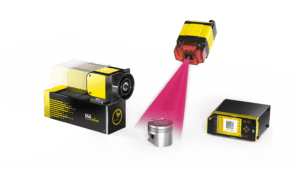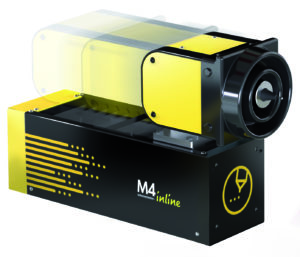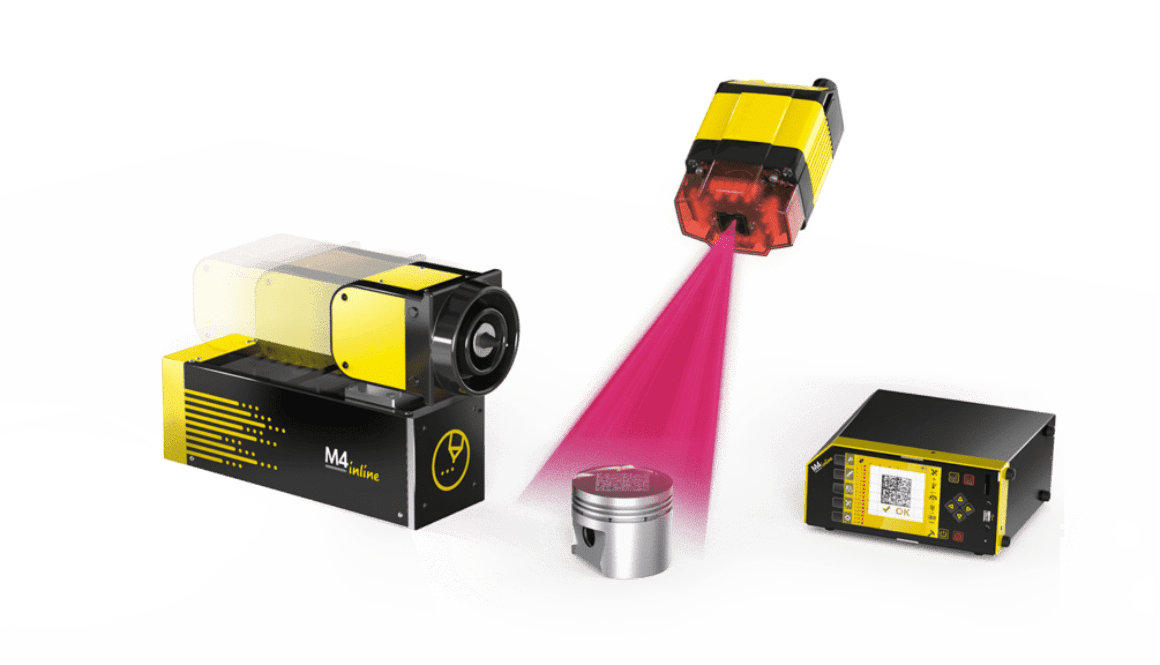Industrial Marking Systems: Connectivity Options for M4 Inline

Industrial marking systems are automated solutions used to permanently mark a variety of materials, including plastic, and metal. They can provide a high degree of accuracy and quality in the markings they produce.
Industrial marking systems such as the M4 Inline can be used for a variety of applications including product identification, traceability, part numbering, serialization, and more. Integrated dot peen marking is one type of industrial marking system that uses compressed air to form dots that together create letters or numbers.
When it comes to industrial marking systems, this model is an efficient way to mark items quickly and accurately. Marking solutions featuring this technology can provide flexibility in terms of font size, typeface selection, and line spacing. The M4 Inline makes it easier to configure this system for optimal performance when integrated correctly into the existing production line.
Overview of Industrial Marking Systems
Industrial marking systems come in many varieties, allowing for flexibility and scalability depending on the size of the product being marked. Common types of industrial marking systems include:
- Dot peen marking is a popular choice for parts that require permanent marks in various materials such as steel or aluminum. This type of system uses mechanical pins to create marks into the surface of the material with an automated motion. The versatility of dot peen makes it suitable for many applications such as serial numbers, logos, images, text, and barcodes.
- Laser engraving is another effective way to mark parts such as stainless steel or plastic; this type of system uses a high-powered laser beam to precisely remove material from the material’s surface to create desired markings. It can also be used for deep impressions that are permanent and tamperproof.
- Thermal transfer printing involves using a combination of heat and pressure to press ink onto the material’s surface to create a clear image or text that will not fade over time. This technique is an excellent choice for complex designs that require crisp resolution quality with durability against environmental wear and tear.
- Inkjet printing uses high-pressure jets of liquid ink to deposit tiny droplets onto surfaces to create readable characters and images with vibrant colors and resolutions up to 600 dpi or more. This method is ideal for creating intricate design elements and detailed logos in short production runs with minimal setup times.
Applications of Industrial Marking Systems
Traceability and product identification are essential in a wide range of industries, from food and beverage production to medical device production to automotive manufacturing. Product traceability is the process of tracking each item through the life of its production process. This enables real-time monitoring of products, making it possible to identify exactly where they came from and when, as well as who handled them.
Traceability allows companies to have an accurate audit trail in case of recall or fraud, enabling them to quickly and effectively trace the source of any defective items.
Product identification helps companies differentiate their products from competitors by creating unique identifiers like barcodes or serial numbers for each item produced. These can be printed on labels using industrial marking systems such as thermal transfer printing or inkjet printing.
Product identification also ensures that each item can be properly identified during assembly and throughout its whole life cycle, enabling more efficient inventory management and ensuring accurate record-keeping for regulatory compliance and customer safety.
Compliance labeling is the process of marking products to show the product has passed certain safety and quality standards. These products meet certain standards, such as those imposed by regulatory bodies like the Food and Drug Administration or industry associations like Underwriters Laboratories.
The need for compliance labeling by industry is twofold:
- It provides customers with the assurance that products meet at least certain minimal safety and quality criteria
- It can protect companies from liability in the event of something going wrong. For example, if a product does not comply with applicable safety standards or fails to meet a customer’s expectations, then the company may be held liable if evidence of their compliance labeling can be proven.
Companies, therefore, have an incentive to properly label their products in accordance with applicable safety and quality regulations.
Part marking methods can also play an important role in the branding and promotional marketing of a product or company. By using a unique part marking system, companies are able to differentiate their products from competitors through a recognizable and memorable logo, while also ensuring that the safety and quality standards required for compliance labeling are met.
Unique part marking systems can help to create a strong brand identity by providing customers with an easy way to identify a certain product as belonging to the same company or family of products. Additionally, part marking processes can be used in promotional campaigns as well, such as when running contests or giveaways that require customers to identify specific parts. In this way, companies are able to both promote their products and ensure that they comply with applicable regulations at the same time.
Connectivity in Industrial Marking Systems
Connectivity in industrial marking systems refers to the ability of marker equipment to communicate with other devices and systems, such as computers, printers, and databases. Connectivity allows for information to quickly be exchanged between different components of a system, often resulting in increased accuracy and efficiency.
Benefits of connectivity in industrial marking systems include:
- Automated data logging: Marking machines can log data automatically without manual intervention, making it easier to trace products through their entire life cycle.
- Faster production times: Connected marking machines allow users to access more information quickly and make decisions based on that data more efficiently, leading to quicker production times.
- Increased accuracy: Information can be stored securely within a connected system, ensuring that parts are correctly identified and marked.
- Improved safety: Remote access functionality makes it possible to monitor markers from any location, reducing the likelihood of safety hazards associated with traditional marking methods.
- Cost savings: Automated systems eliminate the need for manual labor and provide cost savings in terms of time spent on processes like labeling or labeling inspection.
Integrating an industrial marking system with the manufacturing process can provide a number of benefits, including consistency and improved traceability. Automation ensures that all parts are marked with the same specifications, avoiding variations in quality or accuracy due to manual labor, while a connected system makes it possible to track parts as they move through the production line, allowing users to identify and troubleshoot potential issues more quickly.
In addition, integrated dot peen marking improves security, as cloud-based systems allow for secure access control, making it possible to ensure that only authorized individuals have access to sensitive data and information. Efficiency is also improved, as the decision to connect machines reduces the need for manual labor and reduces human error, which can help speed up production times.
Capabilities of the M4 Inline
The M4 Inline provides a dot peen marking solution where the equipment is paired with a translation unit and a proofreading and information processing system. The system allows for integrated automation and positioning vertically, horizontally, or inverted to provide the best marking angle for the product line.
This system also offers two operating modes: automatic or expert. These features combine to provide numerous benefits, including:
- Improved traceability
- Better quality control
- Enhanced data management
- Error reduction
- Reduced downtime
The M4 Inline dot peen marking system is a powerful and convenient tool for the production environment. The automated capabilities mean increased accuracy and traceability, as well as improved quality for the mark produced.
The combination of integrated automation and connectivity utilities makes dot peen marking systems an excellent choice for any manufacturers looking to increase their efficiency in the production line.
Interested in reading more about successful applications of marking solutions? Consider this resource:
https://www.technomark-inc.com/applications/

